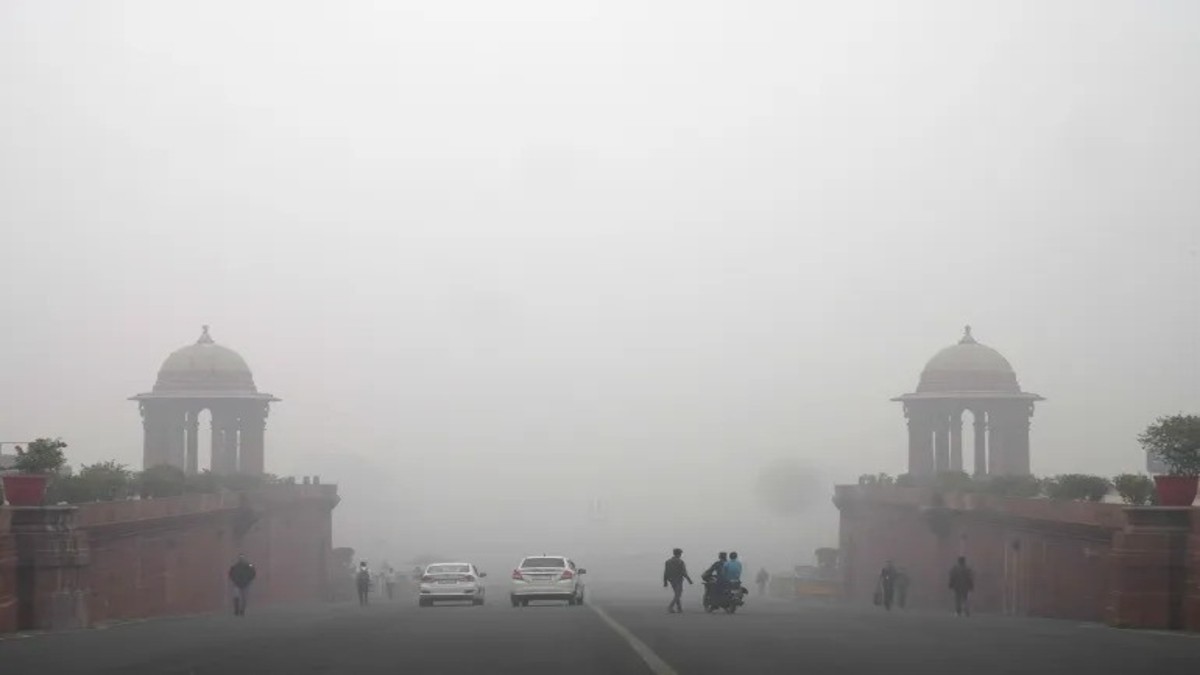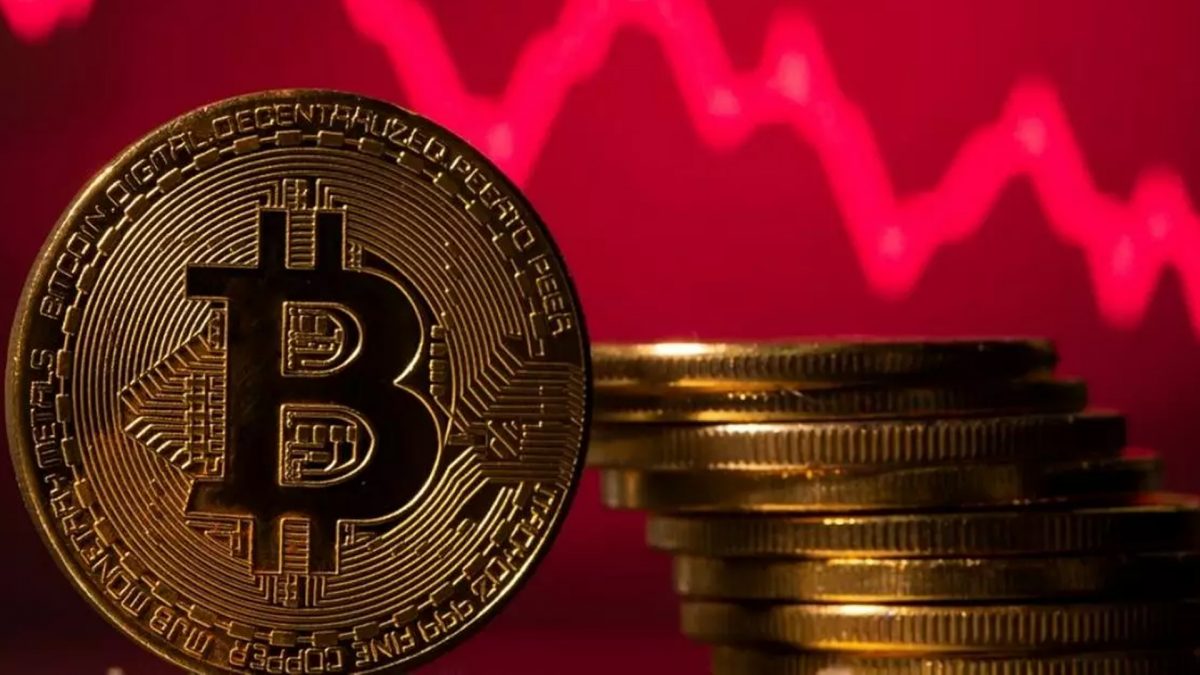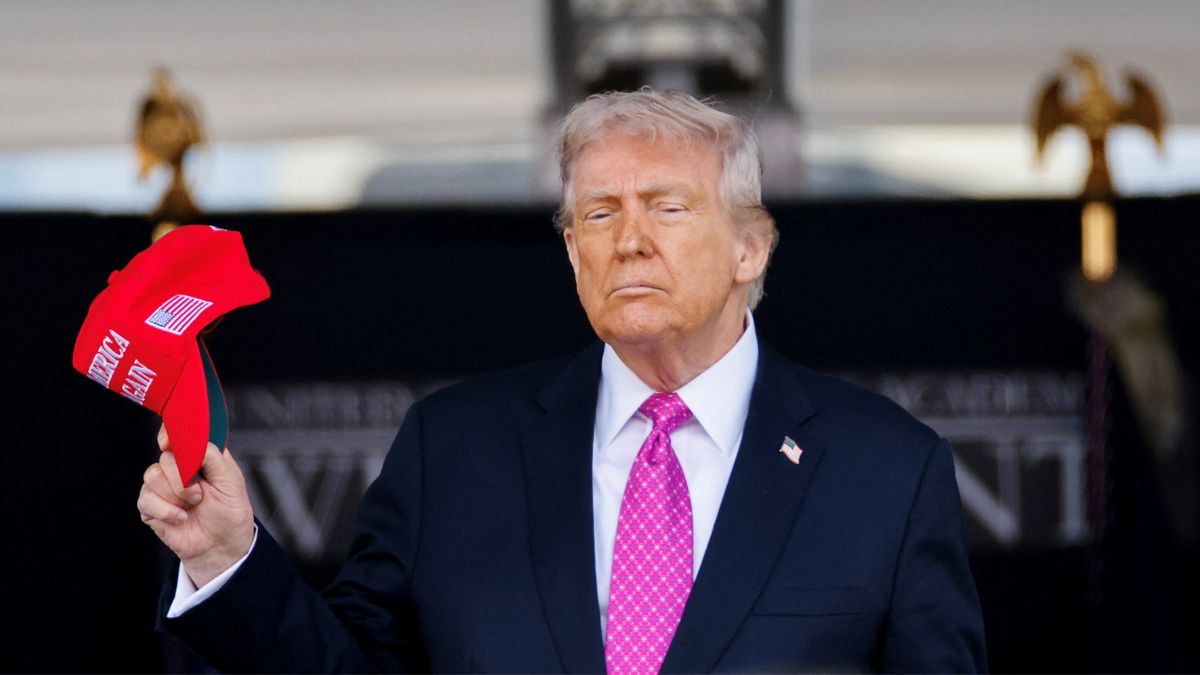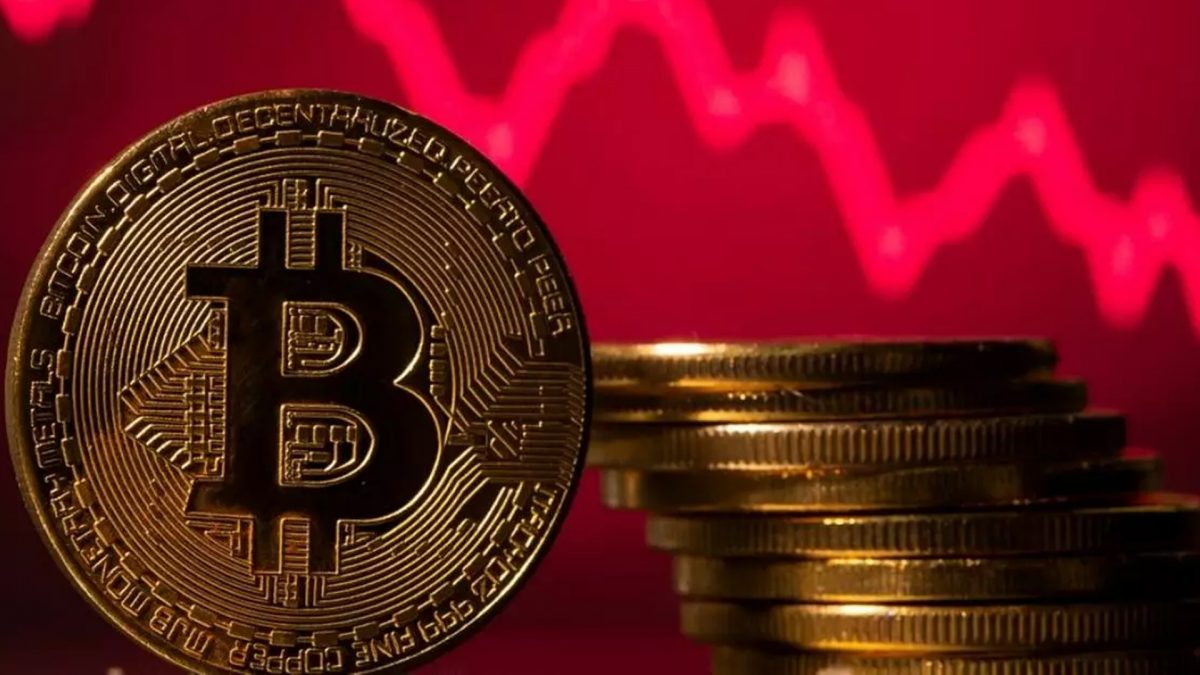The peak Air Quality Index (AQI) in Delhi for November 2025 was 764, reaching this level around November 13, 2025. The peak AQI in Beijing in 2025 so far was 236 on November 5. The average AQI for Beijing in 2025 has been around 77; the same for Delhi has been 129. Both Beijing and New Delhi are capitals of the two most populous nations and fast-growing large economies.
The highest recorded AQI levels in Delhi’s history are difficult to pinpoint definitively due to different measurement systems, with some reports citing peak values near 1000 to 1200 on certain days.
Air quality or air pollution is represented by the annual mean concentration of particulate matter PM10 (particles smaller than 10 microns) and PM2.5 (particles smaller than 2.5 microns, about 25 to 100 times thinner than a human hair).
According to the World Health Organisation (WHO) ambient air quality database, 2022 status report, recommended levels as of 2021 are 15 μg/m³ (annual mean) for PM10, 5 μg/m³ (annual mean) for PM2.5, and 25 μg/m³ (annual mean) for NO₂. 13 of the 25 cities worldwide with the highest levels of PM are in India. The highest recorded daily PM2.5 level in Delhi was on November 18, 2024, when it reached 602 micrograms per cubic metre. At the same time, PM10 also shot up to 999 (the maximum level for the monitors), instead of the recommended limit of 100.
New Delhi’s AQI is a major problem, especially from October to February, when pollution levels frequently reach “severe” or “hazardous”. The issue is caused by a combination of factors, including vehicle and industrial emissions, road dust, stubble burning in neighbouring states, and unfavourable meteorological conditions that trap pollutants. This has led to significant public health concerns, including protests, and warnings from medical professionals asking people to temporarily leave the city.
Quick Reads
View AllNew Delhi’s Pollution State
New Delhi is second only to Baghdad, Iraq, as the most polluted capital city in the world for 2025. The air pollution in Delhi was found to be the most harmful of any major city by the US-based Health Effects Institute. Motor vehicle emissions, wood-burning fires, cow dung cake combustion, fires on agricultural land, exhaust from diesel generators, dust from construction sites, burning garbage and illegal industrial activities in Delhi are some of the causes.
Agricultural stubble burning in Haryana and Punjab, coupled with north-westerly winds, has also affected Delhi’s air quality since the 1980s when crops are being harvested. The fire in the Bhalswa landfill is also a major reason for airborne particles in Delhi. The drift/mist emissions from the wet cooling towers are also a source of particulate matter, as they are widely used in industry and other sectors for dissipating heat in cooling systems. Delhi’s air misses clean-air standards by a wide margin for much of the year. On the worst days, the AQI exceeds 400.
A 2016 study indicated that of PM2.5 pollution, 38 per cent came from road dust, 20 per cent from vehicles, 12 per cent from domestic fuel burning, and 11 per cent from industrial point sources. Of NOx emissions, 52 per cent came from industrial point sources (mostly from power plants) and 36 per cent from vehicles. The vehicle emissions were potentially more damaging as they were emitted close to people.
Of SO₂ emissions, 90 per cent came from industrial point sources. Of CO emissions, 83 per cent came from vehicles. The large contributions of vehicles and road dust to air pollution have been made worse by court-ordered restrictions on bus service in Delhi, which had the effect of accelerating the purchase of private cars and the construction of roads to accommodate them. India’s Ministry of Earth Sciences published a research paper in October 2018 attributing almost 41 per cent of air pollution to vehicular emissions, 21.5 per cent to dust and 18 per cent to industrial emissions.
On 25 November 2019, the Supreme Court of India expressed their sentiments on the pollution in Delhi, saying, “Delhi has become worse than narak (hell).” Interestingly, during the Covid-19 pandemic lockdown, the air quality in Delhi significantly improved. The AQI in Delhi generally falls within the Satisfactory (51–100) and Moderate (101–200) ranges between March and September and then drastically deteriorates to Poor (201–300), Severe (301–400), or Hazardous (401–500+) levels between October and February due to various factors.
Health Effects Due to Pollution
Pollution causes a wide range of health effects, including immediate issues like breathlessness, chest constriction, coughing, headaches, and eye irritation. Poor air quality is a cause of reduced lung capacity, sore throats, coughs, fatigue, and lung cancer. It causes long-term, chronic diseases such as respiratory illnesses (asthma, COPD), cardiovascular diseases (heart attacks, stroke), allergies, and diabetes. It can also lead to premature death and affect neurological, reproductive, and immune systems. Vulnerable populations, including children, the elderly, and those with pre-existing conditions, are at a higher risk.
Air pollution in India is estimated to kill about 2 million people every year and is the fifth largest cause of death in India. India has the world’s highest death rate from chronic respiratory diseases and asthma, according to the WHO. Another study, also published in The Lancet Planetary Health in 2024, estimated that 1.5 million deaths occurred annually in India due to long-term exposure to fine particulate matter when levels of this pollutant rose in excess of the 5 μg/m³ limit that is recommended by the WHO ambient air quality guidelines. In Delhi, reportedly poor air quality has irreversibly damaged the lungs of 2.2 million children.
How China Managed to Improve AQI
China managed to clear Beijing of severe pollution over the last decade through a comprehensive “war on pollution” that involved strong government mandates, massive financial investment, and coordinated regional efforts targeting the primary sources of emissions.
Thousands of heavily polluting factories in and around Beijing were shut down, relocated, or upgraded with advanced emission control technologies. The iron and steel industries were specifically targeted for capacity reduction. Beijing drastically shifted away from coal by eliminating coal-fired power plants and boilers and transitioning over a million households to cleaner energy sources like natural gas or electricity for heating and cooking.
Strict standards were implemented for new vehicles, older high-emission vehicles were phased out through scrapping incentives and driving bans, and the use of electric and new energy vehicles (NEVs) was heavily promoted through subsidies and infrastructure development. The city also expanded its public transport system and reintroduced bike-sharing schemes. A high-density, three-dimensional air quality monitoring network was established across the city, using advanced technologies like satellite remote sensing to track pollution sources in real time. This data was made public, increasing accountability and public awareness.
Recognising that air pollution often crosses administrative boundaries, Beijing coordinated its efforts with neighbouring provinces (Tianjin and Hebei) to manage emissions across the entire region. Measures were put in place to control dust from construction sites and unpaved areas. Afforestation projects in surrounding areas also helped reduce sandstorms. These sustained and stringent measures resulted in a significant improvement in air quality. Between 2013 and 2023, the annual average concentration of fine particulate matter (PM2.5) in Beijing decreased by approximately 64 per cent and the number of “good air days” increased from just 13 to over 300 per year.
Everything that Beijing did is well known and understood by the authorities in India. Do we lack the will to act and enforce?
Short-Term Measures in Delhi
Delhi had proposed many temporary measures to reduce air pollution, more so when AQI hits “severe” (300+), but didn’t get enough success due to the lack of implementation in reality. The efficacy of each individual step has been a matter of public debate.
The India Meteorological Department (IMD) has air quality monitoring stations at locations including Lodhi Road and Aya Nagar in Delhi. Other IMD stations are located at the IGI Airport, CRRI Mathura Road, IITM Delhi, Dhirpur, Delhi Technological University, Pitampura, Shaheed Sukhdev College of Business Studies (Rohini), and in nearby Noida and Ghaziabad (at GTB Hospital). The air pollution monitor of the US Embassy in New Delhi covers the area of Chanakyapuri.
Delhi is mostly kerosene-free, and most households use LPG for cooking. The Delhi government is supplying power to unauthorised colonies which use diesel generators. The Delhi government often shuts down schools and government offices due to the severe air pollution and encourages online classes or work. Working from home is being encouraged for all types of organisations, especially during very bad days. Stoppage of construction and demolition work is another such move.
All diesel generator sets are temporarily banned, except at hospitals and in emergencies. Vacuum cleaning of roads has been selectively done, but much more is required. Water sprinkling of roads is attempted a few times. Smog towers are being installed in the city to purify and clean the air, but numbers are too few. Also smog towers have had limited success, with studies showing a significant reduction in pollution only within a small radius of about 50 metres.
There are 11 coal-based thermal power plants within a 300 km radius of Delhi. The power plants closest to Delhi include the Dadri TPS (Uttar Pradesh) and the Panipat, Rajiv Gandhi, Mahatma Gandhi, Indira Gandhi, and Yamuna Nagar TPS (all in Haryana). Some of them affect Delhi pollution depending on wind direction, especially emissions of sulphur dioxide.
Vehicle pollution checking has been intensified. Diesel cars above 10 years and petrol cars above 15 years of age are banned in Delhi due to the pollution they could cause. The Supreme Court of India also suggested that government officers living in government colonies should either commute by carpooling together or by public transport. The Delhi Government imposes selective bans on the entry of commercial petrol and diesel vehicles into Delhi during peak pollution.
The “odd-even” plan in Delhi, allowing private cars with odd-numbered license plates on odd dates and even-numbered license plates on even dates, was not only unpopular but also made limited impact.
The Supreme Court of India banned the sale of firecrackers in Delhi to alleviate pollution, and statistically it has made an impact for the good. To contend with the poor air quality, embassies and international businesses in Delhi often consider reducing staff tenures, advising staff to reconsider bringing their children to Delhi, providing high-end air purifiers, and installing expensive air purifiers in their offices.
The Delhi government, in collaboration with IIT-Kanpur, conducted cloud seeding trials in October 2025 to combat air pollution. The experiment, which involved aircraft dispersing seeding chemicals into the clouds, ultimately failed to produce significant rainfall because the clouds lacked sufficient moisture.
The Pusa Bio-decomposer will help farmers harvest crops to prevent stubble burning. Delhi authorities have established a 10-member air pollution control team working in a dedicated conference room. They examine complaints received through the “Green Delhi” mobile app. The mobile app is considered successful due to its high volume of user-submitted pollution complaints and high resolution rate.
Long-Term Initiatives to Curb Pollution in Delhi
The Supreme Court of India has often reprimanded the central and state governments and asked them to take strict measures to reduce pollution in Delhi and the NCR region. Badarpur Power Plant was permanently shut down in October 2018. In October 2020, the union environment ministry formed a commission for Air Quality Management in the National Capital Region and Adjoining Area Ordinance.
The Delhi government has plans to add 1000 extra CNG buses to the fleet. All combustion engine vehicles will be upgraded to BS6 emission standards, and others are proposed to be banned. Faster Adoption and Manufacturing of Electric Vehicles (FAMEV) targets all vehicles to be battery electric and hybrid by 2030. Delhi Metro Rail Corporation (DMRC) is working to increase power from renewable sources from the current 33 per cent through a solar power purchase agreement that will derive more than 60 per cent of its total power from renewable sources in the next two years.
An initiative that is being considered to address air pollution is a 1,600 km long and 5 km wide green ecological corridor along the Aravalli Range from Gujarat to Delhi connecting to the Sivalik Hills range. This would involve the planting of 1.35 billion (135 crore) new native trees over 10 years to combat pollution.
To Summarise
In November 2024, pollution levels in Delhi reached drastic measures following increased stubble-burning activities in India and Pakistan’s Punjab region, causing significant smog on the morning of November 8, causing Delhi to momentarily become the most polluted city in the world. It again became the most polluted city in the world on November 12, the same year, reaching an AQI reading of 1,200.
In view of pollution, the demand for air purifiers has increased significantly in Delhi-NCR. According to the available data, out of the total sales in the country, 70 per cent of the demand is coming from Delhi-NCR. However, companies say that the demand for air purifiers has increased from other parts of the country as well.
On November 9, 2025, hundreds of people, including children and activists, protested at India Gate in New Delhi against the dangerous levels of air pollution. The air quality index (AQI) was often above 300-400, making it a health emergency. Protesters called for immediate government action, criticising years of neglect.
Once called the ‘kingdom of the bicycle’, China’s economic growth was powered by combustion engines that engulfed its capital, Beijing, in smog and severe air pollution. As China emerged as the world’s largest automobile producer and consumer, it grappled with the detrimental impacts of increased oil consumption. However, the centrally controlled government made remarkable strides in recent years to improve the city’s air quality, setting an example for other cities grappling with similar challenges.
Beijing implemented a series of dynamic, multi-faceted air pollution control strategies, targeting different sources of pollution. Beijing pushed urban rail expansion, set up a cutting-edge integrated air quality monitoring network, and used advanced technologies such as high-resolution satellite remote sensing and laser radar.
In Beijing, a dense PM2.5 monitoring network was set up, with over 1000 sensors distributed across the city for identifying precise areas. Now, Beijing’s ambitious Five-Year Plans coupled with economic growth include environmental stewardship. They managed investment reprioritisation, reduced freeway growth, and curbed parking provisions, underpinned by an overarching focus on transit and the revival of traditional Chinese urban design – walking centres and transit linear corridors with dense, mixed-use patterns.
The result? A decoupling of private vehicle use from wealth, as Beijing embraced public transport, cycling, and e-vehicles powered by renewable energy sources, reshaping the city’s transportation landscape. They created Low Emission Zones (LEZs) where only green vehicles could drive.
Beijing reduced air pollution by up to 89 per cent in a decade. Despite a tripling of vehicle numbers, pollution levels have decreased, making Beijing a role model for other cities. Beijing’s success was not limited to its boundaries. The city actively coordinated air pollution control measures with surrounding regions. New Delhi needs to do the same with UP, Haryana, Punjab and Rajasthan.
The pollution control measures are well known. Some of them are not popular, but in the end they are public-friendly. The Indian government has to have a clear strategy. Various stakeholders have to be on board. Strategy is to be driven hard and pushed through. The capital city of the fourth largest economy cannot continue to be one of the world’s most polluted cities. Time to Act is “Now”, lest another generation suffer the ills of air pollution.
(The writer is former Director General, Centre for Air Power Studies. Views expressed in the above piece are personal and solely those of the author. They do not necessarily reflect Firstpost’s views.)


)

)
)
)
)
)
)
)
)



